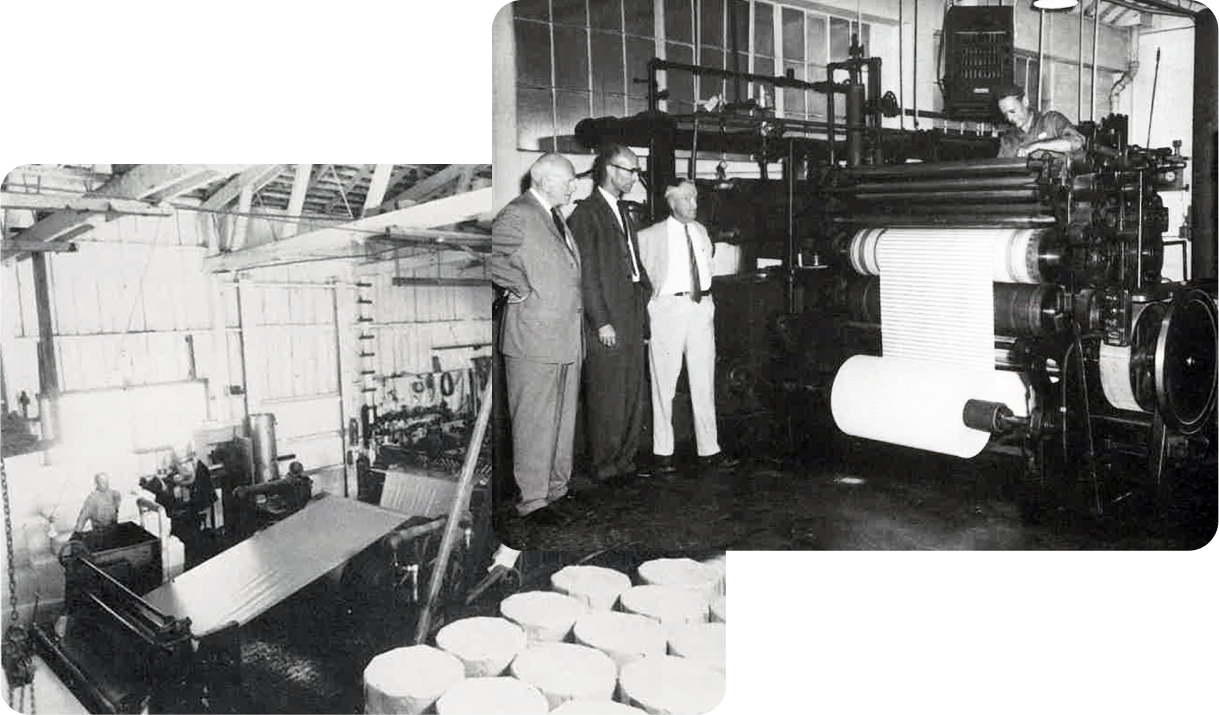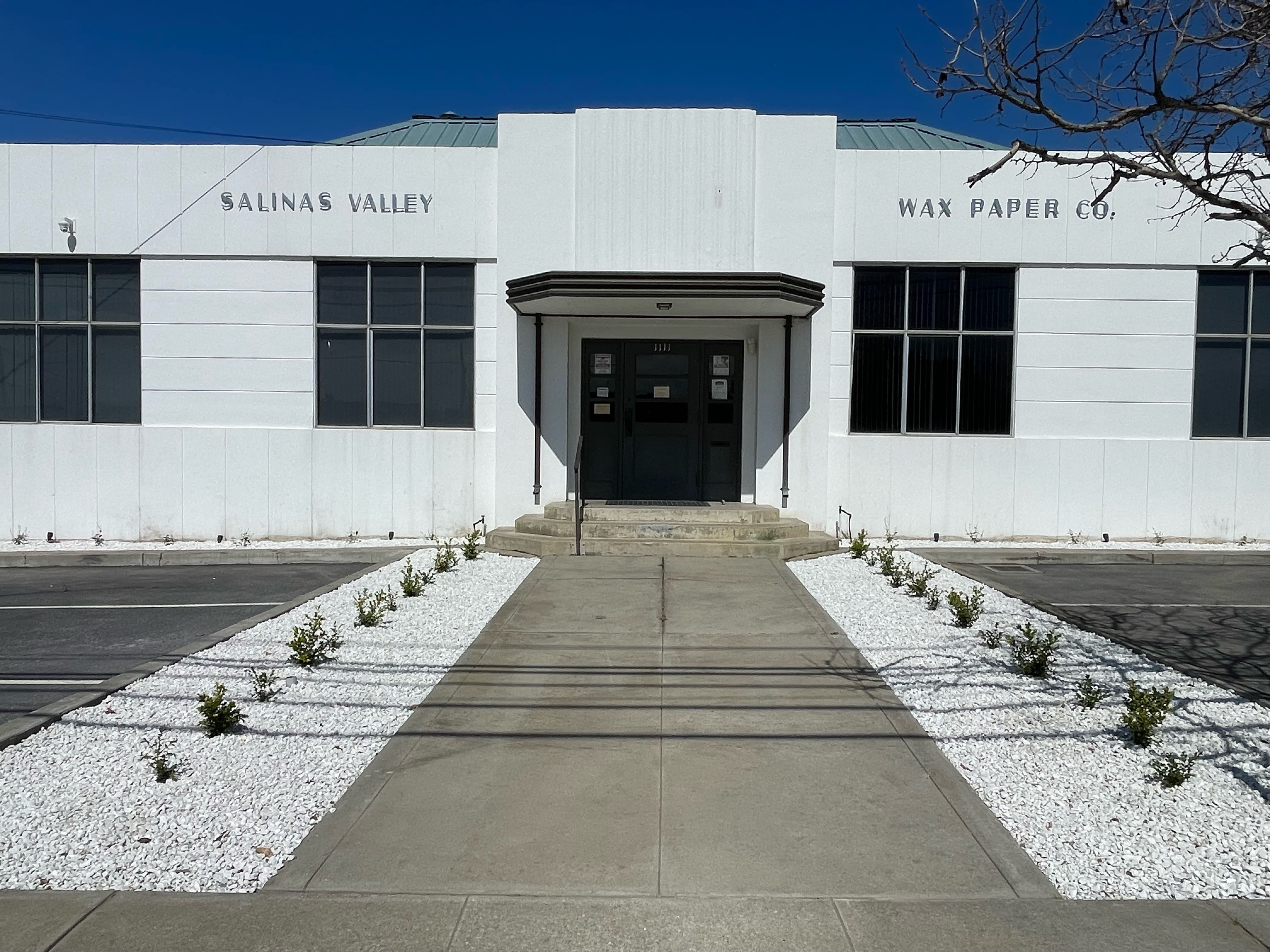Salinas Valley Wax Paper
Our Story: A family-owned company in the heart of Monterey County since 1928

Our Story: A family-owned company in the heart of Monterey County since 1928

It was an unlikely partnership to begin with. But the choice of product really stretches the imagination. Why would a successful wholesale and retail merchant who had recently been hard hit by unsuccessful attempts to engage in the mass production of honey and smelting materials join with a trained geologist to produce wax paper? Maybe a mining activity, or some agricultural venture. But making wax paper? If anyone had asked Charlie why, he probably would have asked why not? Charlie couldn't help looking at a lemon and seeing the potential for lemonade. Dreams and ideas just flowed out from his mind like water over a full darn. They were so varied that not all could be acted upon. But many were developed, depending upon the time Charlie could spend on them and the support he received from others. In this case, he probably noticed the fact that the powder company he was doing business with made use of wax paper. So, it was only natural for Charlie to conclude that the paper should be produced locally, and by him.
Emmons proved to be the right person in the right place at the right time to team up with Charlie on this scheme. Virginia Nelson suggests this scenario:
"Daddy went into the store to ask Mr. Goetz what he thought of him starting a garage. Maybe he had the idea of borrowing some money, I don't remember. But Mr. Goetz said 'Oh Guy, you don't want to do that. Benson has too many garages already.' He said he had an idea. So, that was the idea of the wax paper company. The main customer could be the Apache Powder Company because they used very heavy wax paper to wrap their powder in. So that is how it came to be started in Benson."
Gaylord Nelson points out that the powder company only used a limited amount of wax paper and other markets had to be found if the venture was to become a success. Emmons was in charge of production. That left Goetz the job of promoter. He tried to take advantage of the new method of wrapping bread, but the heat proved to be a problem in production of this type of wax paper. So he began to promote his product among the lettuce growers of Phoenix and Yuma.
Virginia Nelson tells this story of the early days of the Arizona Wax Paper Company:
"They put up the building right out next to the railroad track. My dad was the operator.
They tried to do bread wraps but that was a disaster because they had no plant interior cooling. Not too long after that Mr. Goetz heard about the shipping of lettuce. So he went to Yuma to check. They had wooden crates then. They lined the crates both ways with long narrow strips of wax paper. They packed the lettuce in there and put ice on top. Then, when they put it in the railroad car they just poured in lots more crushed ice."
Knowing that Charlie's mind worked actively, it is easy to understand why he moved logically from wax paper into the ice business and how his inventive mind produced a couple of patents dealing with rail cars. But first, let us look at how the wax paper operation moved to California, Charlie's original destination when he first left Buffalo.
Virginia Nelson remembers:
"Mr. Goetz, I think, was trying to find some markets for the paper. He went to Yuma because they were growing lettuce there. He met Bruce Church, who was a forerunner of the lettuce industry here (in Salinas). He said, 'Oh Charlie, Salinas is going to be the lettuce capital of the world.' So instead of going back to Benson Charlie just sent my father a telegram that he was corning up here. The secretary of the Chamber of Commerce, Fred McCarger, took him all around trying to find a place to put the machinery to start a wax paper company here. We moved here in '29."
Gaylord Nelson interjects that, in the fall of 1928, Charlie rented one end of a warehouse from Spreckels Sugar Company in the company town of that name, just south of Salinas. The current building was erected in 1937 when the Salinas Valley Wax Paper Co. moved to,1111 Abbott Street. Emmons moved to Salinas to run this business and Goetz remained in Arizona. Charlie made frequent visits to Salinas. Virginia Nelson recalls that on one of those visits Charlie counseled her to get a job in the cannery. She and her sister had the problem of not knowing anyone and needing some time to get involved in the life of their new community. They thought the idea of a job was a good one. They wanted to buy a present for their mother. This resulted in another story Virginia shared:
"He took us down to the cannery (on East San Luis St.). We peeled apricots; I mean we peeled peaches, and pitted them! At the end of the week, we couldn't open our hands. They were so sore we just quit. We went back to collect our paycheck and that was it. With the money, we bought my mother a cake plate and we each bought a tennis racket."
Gaylord met Virginia at Salinas Junior College, that became Hartnell Community College. Then they socialized in a group named the Epworth League which met at the Methodist Church. Gaylord was born in Walla Walla, Washington, in 1912. His family moved to California in 1920 due to his father's poor health. His doctor advised him to get to California to recuperate from his serious case of influenza. After traveling around the state, they settled in the Langley School District of the Prunedale area, north of Salinas.
Gaylord was working for the local newspaper, the Salinas Index Journal until 1937, when Mr. Emmons offered him a job as office manager at Salinas Valley Wax. They were in the midst of putting up the new building.
Gaylord and Virginia were married shortly after his employment, and it wasn't very long before Mr. Emmons and Mr. Goetz decided to make him a limited partner. This was increased in 1956, when Emmons retired and went back to Arizona. Gaylord chalks up his success to being in the right place at the right time. He must also have been the right person.
Gaylord recalls that he was surprised that the arrangement worked so well. "After my college courses explained that a partnership is a lousy kind of business to have, I went in with my eyes wide open and learned very soon that a partnership is no better or worse than the people involved. I couldn't have had two better partners than Mr. Emmons and Mr. Goetz."
The Salinas Valley Wax Paper Co. proved to be as stalwart a business as the store in Benson, Arizona. Charlie left Guy and Gaylord to run the Salinas operation and returned to Arizona. He was in constant touch and visited often, but spent most of his time on his various Arizona interests, the most productive being the Arizona Wax Paper Co. and Goetz Ice Co. operations on the Tolleson property.

At Salinas Valley Wax Paper, we prioritize providing sustainable products and services to our clients. We are acutely aware of our responsibility to safeguard our communities and the environment.

We provide custom paper-converting solutions to meet each unique customer's needs. Contact our team to develop customized solutions that exceed your expectations.